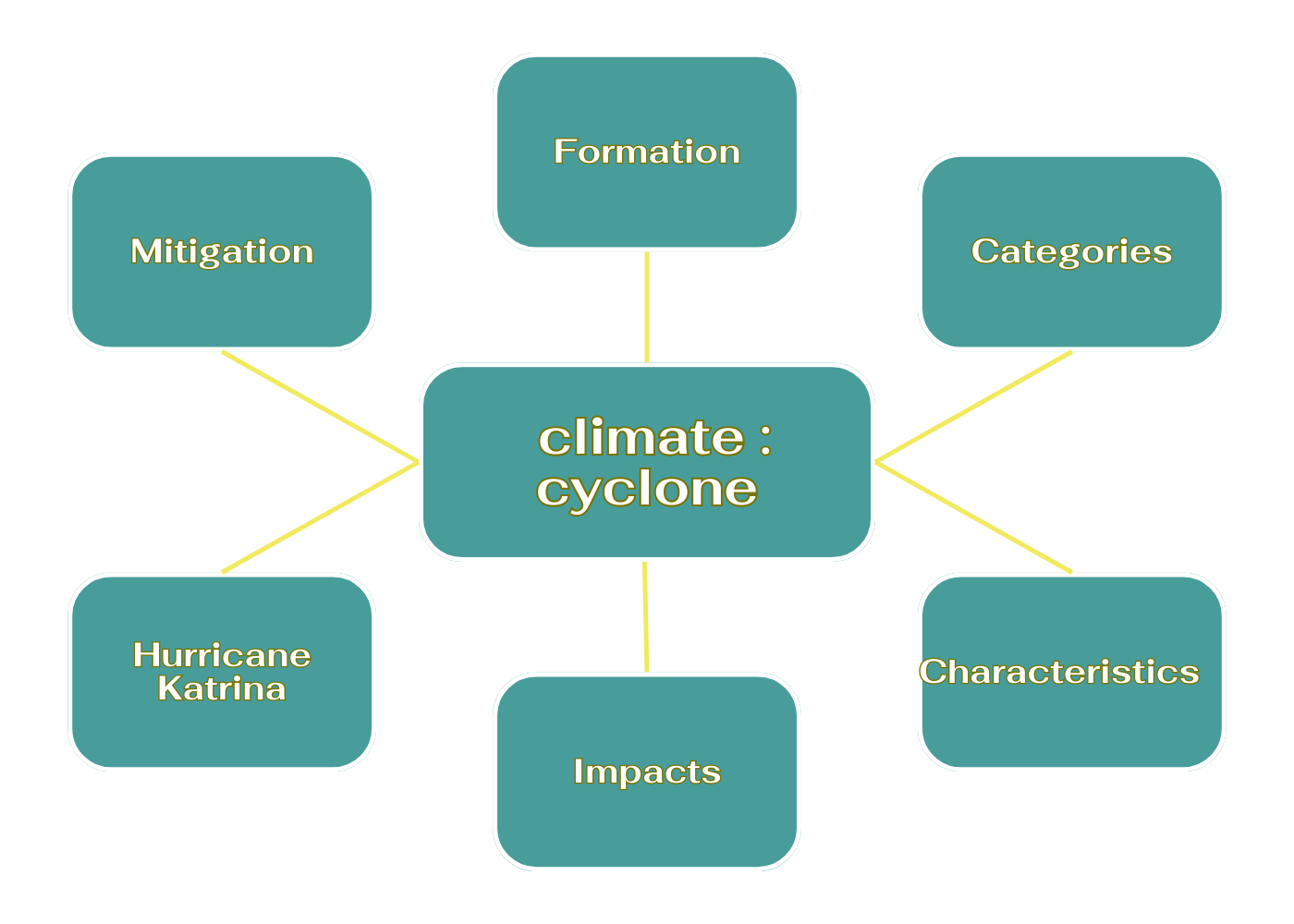Detailed content
Introduction
In the realm of meteorology and geography, the interaction between
climate and cyclones is of paramount importance. Cyclones,
characterized by their swirling winds and intense atmospheric
disturbances, are significant weather phenomena that have profound
impacts on both natural environments and human societies.
Understanding the intricate relationship between climate patterns
and cyclone formation, behavior, and distribution is crucial for
mitigating risks associated with these extreme weather events. In
this comprehensive analysis, we delve into the dynamics of climate
and cyclones, exploring their interconnectedness and implications.
Climate: A Primer
Climate refers to the long-term patterns of temperature,
precipitation, humidity, wind, and other atmospheric conditions in
a particular region. It is shaped by a complex interplay of
factors, including latitude, elevation, proximity to water bodies,
ocean currents, and atmospheric circulation patterns. These
factors influence the distribution of energy across the Earth's
surface, driving variations in temperature and weather patterns.
Factors Influencing Climate
• Latitude: The angle at which sunlight strikes the Earth's
surface varies with latitude, leading to temperature variations.
Regions near the equator receive more direct sunlight and tend to
be warmer, while those closer to the poles receive oblique
sunlight and are cooler.
• Elevation: Higher elevations experience lower
temperatures due to the decrease in atmospheric pressure with
altitude. This phenomenon, known as the lapse rate, leads to
cooler climates in mountainous regions.
• Proximity to Water Bodies: Oceans and large water bodies
moderate temperatures by absorbing and releasing heat more slowly
than land. Coastal areas often have milder climates compared to
inland regions.
• Ocean Currents: Ocean currents transport heat across the
globe, influencing regional climates. Warm currents, such as the
Gulf Stream, can raise temperatures in coastal areas, while cold
currents have the opposite effect.
• Atmospheric Circulation Patterns: The movement of air
masses driven by pressure gradients and the Earth's rotation
shapes global wind patterns, which, in turn, influence climate.
Key circulation patterns include the Hadley, Ferrel, and Polar
cells.
Cyclones: Nature's Fury
Cyclones, known by various names such as hurricanes, typhoons, or
tropical cyclones depending on their location, are powerful storms
characterized by low atmospheric pressure, strong winds, and heavy
rainfall. These swirling vortices typically form over warm ocean
waters and can unleash devastating impacts when they make
landfall. Understanding the formation and behavior of cyclones is
essential for effective disaster preparedness and response
efforts.
Classification of Cyclones
Cyclones are classified based on their maximum sustained wind
speeds using various scales, including the Saffir-Simpson
Hurricane Wind Scale (for Atlantic and Eastern Pacific hurricanes)
and the Australian Tropical Cyclone Intensity Scale. Categories
range from tropical depressions with wind speeds below 39 mph to
Category 5 hurricanes with winds exceeding 157 mph.
The Influence of Climate on Cyclones
Climate exerts a profound influence on the formation, intensity,
and distribution of cyclones worldwide. Various climatic factors
shape the environments in which cyclones develop and modulate
their behavior. Understanding these interactions is essential for
assessing the potential impacts of climate change on cyclone
activity.
Sea Level Rise
Sea level rise, another consequence of climate change, can
exacerbate the impacts of cyclones, particularly storm surges.
Higher sea levels increase the inundation potential of storm
surges, leading to more extensive coastal flooding and erosion
during cyclone landfalls. Low-lying coastal areas are particularly
vulnerable to these impacts, with implications for human
populations, infrastructure, and ecosystems.
Precipitation Patterns
Changes in precipitation patterns associated with climate change
can influence the intensity and duration of rainfall associated
with cyclones. Warmer air holds more moisture, leading to heavier
rainfall and increased flooding during cyclone events.
Additionally, alterations in atmospheric circulation patterns can
affect the distribution of rainfall, with some regions
experiencing more frequent or intense rainfall events.
Intensity and Frequency
While the relationship between climate change and cyclone
intensity remains an active area of research, some studies suggest
a potential increase in the proportion of intense cyclones in a
warming climate. However, the overall impact of climate change on
cyclone frequency is less certain, with some regions experiencing
a decrease in cyclone occurrence due to changes in atmospheric
circulation patterns.
